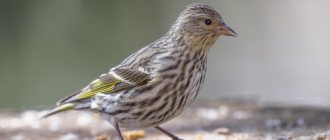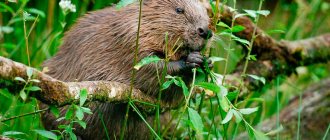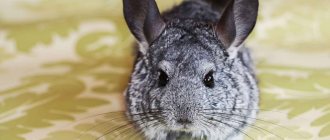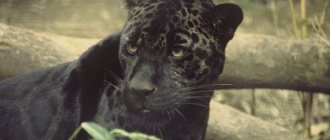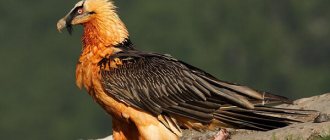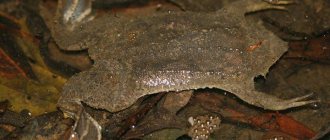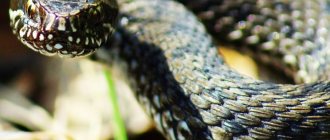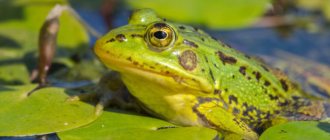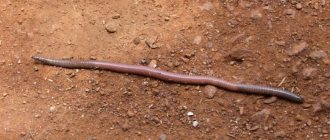Animal nutria or swamp beaver. Description
Externally, nutria are similar in many ways to rats, but they are not rats. These are mammalian rodents, which are the only representatives of the species of the nutria family. Due to their semi-aquatic lifestyle, they are also called “swamp beavers,” “koipu,” or “otters.”
As can be seen in the photo, these representatives of the fauna are characterized by a stocky build, low powerful limbs, a long tail and short, slightly pubescent ears. To the uninitiated, a shaggy animal may indeed seem like an overweight rat or an emaciated beaver.
The body length of this waterfowl can reach 60 cm and weight - 12 kg. Of course, adult males look more plump. Females, in contrast, weigh on average about 8-9 kg with a body length of 35–45 cm. Regardless of the age of the animal, the length of its tail is approximately the same - 45 cm.
Did you know? The lifespan of nutria is about 7-8 years.
Nutria are characterized by:
- large, relative to body size, head with small eyes;
- blunt (not elongated) muzzle;
- long vibrissae;
- incisors are bright orange.
Like other representatives of the river animal world, swamp beavers have a number of biological features in their body anatomy.
Eg:
- They have thick fluff in their ears, which concentrates the air, preventing water from entering the ear canal.
- When an animal dives, the obturator muscles inside its nostrils are activated, as a result of which liquid does not enter the lungs.
- Due to the anterior separation, the rodent's lips can close tightly in front of the teeth, which allows them to pinch off plant food at depth without absorbing water.
- On the hind legs of nutria there are interdigital partitions that facilitate movement in the reservoir.
- A scaly skin covering with a clear cross-section on a rounded, smooth tail helps control the body when diving.
- Nutria babies, due to the high location of the mammary glands on the sides of females, can feed underwater.
Did you know? Nutria have poor eyesight but excellent hearing
.
Conditions for animals
First of all, the nutria needs to organize its cell. Wooden ones are not suitable for her, as she can easily chew through them. You will have to organize ones that have a metal coating or are covered with a metal mesh.
You also need an open or closed enclosure. If you plan to keep nutria outdoors, then you need to create a house for them so that the animal can take refuge in it.
Note!
Domestic hedgehog - a review of the best hedgehog breeds to keep, all the features of the pet from feeding to living conditions! + photos and videos
Domestic goat - an overview of the features of keeping goats, how to care for them and what to feed them, as well as diseases, treatment and prevention of diseases in the review!
Sheep - learn everything about keeping sheep, features of living conditions, diet and the main characteristics of sheep as a pet!
This is necessary even if the winters are quite warm. In the wintering room they need a temperature of +15 degrees.
Also keep in mind that good ventilation and access to fresh air all the time are important for the animal. But at the same time, drafts can cause them to become ill and even die.
The cage in which the nutria will overwinter or build its nest should stand at a height of 80 cm from ground level.
Features, habitat
In the wild, nutria are widespread on the shores of South America. The extent of their habitat starts from the Bolivian borders and reaches Tierra del Fuego. Over time, European fur farmers noticed the quality of nutria fur and contributed to its acclimatization in many countries overseas. As a result, the genus was introduced to the Eurasian continent, the United States of America, and Africa.
Due to excessive heat and lack of moisture, the African climate was not suitable for the rodent. In the areas where it has taken root, its habitats vary, depending on weather conditions during the cold season. A fact went down in history when, in the 80s of the 20th century, animals were unable to winter in severe northern frosts, which led to the extinction of the species in the Scandinavian countries and in the northern regions of the United States.
Check out
Muskrat, nutria, otter: characteristics and distinctive features from beaver
Wild nutria populations are found in:
- Transcaucasia;
- Kyrgyzstan;
- Tajikistan;
- Russia;
- Brazil;
- USA;
- Canada;
- Chile;
- Bolivia.
It is typical that in some countries rodents are perceived as pests and measures are taken to prevent their spread. In Europe, the species is found mainly in places of artificial breeding, but recently researchers have attributed to it striking features of naturalization.
Despite the fact that the homeland of coipus is warm regions, during the process of acclimatization they have adapted to frosts down to -35°C and heat up to +40°C, do not build warm shelters, and can choose both lowlands and hills for life.
A group of rodents was spotted in the Andes at an altitude of 1190 meters above sea level. The ideal place for their habitat is a reservoir with low-flowing, stagnant water (alder swamps, lakes, the banks of which are overgrown with reeds), as well as rivers, on the banks of which there are signs of swamping.
Did you know? In severe frosts, the weakest point of the nutria is its long tail. As a result of frostbite, the animal often develops blood poisoning, which leads to death.
.
Life cycle
Young nutria have good hearing and innate abilities to move in water and on land. In some females, the litter can amount to 20 individuals. Despite their fur cover, newborn animals can freeze in the winter season, since their parents do not prepare warm nests and special shelters for them.
A baby nutria weighs about 250 g. They grow slowly. The maximum daily increase in live weight does not exceed 25 g, but it is observed only after the animals reach 14 months of age. In addition, in 5-6-month-old swamp beavers, growth stops.
Therefore, even with a balanced diet, it is possible to raise a full-fledged adult animal within 2–2.5 years. Moreover, these animals become sexually mature already in the period from 3 to 7 months. After three years of age, their reproductive activity fades away.
Check out
What does nutria eat at home and in nature?
Throughout its life cycle, the coipu molts several times. Regardless of the breed, this first occurs 50 days after birth. The molting period lasts about 4 months. After its completion, the animal is covered with a high-quality fur coat, consisting of a long, coarse awn and dense undercoat.
It is characteristic that in the abdominal area the pubescence is much denser than on the sides and back. In adult individuals, coat change occurs gradually, extending throughout the year. And since this process slows down in July - August and November - March, the best quality of fur is observed in winter.
The activity of a rodent depends on the temperature regime. Conditions at +15…+20°C are considered comfortable for him. Increased mobility does not affect the animal’s metabolic processes, which is associated with a 15–20 times slower heartbeat. During the cold season, nutria lead a sedentary lifestyle.
It is impossible to calculate the average age of wild individuals, and when they are kept in cages, the life cycle of the animal ends when it reaches slaughter weight.
A shortage of water for bathing in the summer worsens the quality of the fur, but its absence in the winter does not affect the fur in any way.
Common types
In the natural environment, nutria with standard light brown and dark red colors are more common. But thanks to the efforts of breeders, bearers of different colors began to appear more and more often in animal farms.
Check out
Nutria farm: DIY construction, drawings, arrangement rules
For those who are planning to breed nutria on a farm or at home, experts advise paying attention to the direction to which a certain species belongs.
The fact is that as these rodents became popular, the selection process focused on meat and fur breeds.
Nutria meat is considered a dietary product and has high taste qualities. If wild animals, upon reaching 9 months, weigh no more than 5 kg, then domesticated selective nutria for meat production at the same age weigh 1.5–2 kg more.
To obtain a high-quality skin, the breeder needs to decide on the desired type of breed, since as a result of experimental crossings, scientists were able to develop 7 unique combined breeds and 9 mutation ones.
Based on certain characteristics in the description, experts distinguish a group of dominant (white Azerbaijani, black and golden colors are included in this group) and recessive (the so-called white northern, albino, pink, straw, smoky, beige and pearlescent nutria).
Standard-colored swamp beavers do not require special care or an original diet to maintain the color of their fur.
Multi-colored nutria furs are in demand in the modern market and are much more expensive than standard ones.
Among the colored animals, they are of particular interest:
- Silver. They are characterized by dark gray or light gray fur. Its luster is given by a thick, soft undercoat, the shades of which are often blue, brown, black and white. The breed was obtained by crossing Italian and beige nutrias. Its sign is the pure silver color on the spine and the red eyes of the beast. To ensure the quality of skins, animals need to be fed properly.
- Golden. They are distinguished by bright orange hair on the back and light golden hues on the peritoneum. The underpad is pink-beige. Eyes are brown. The breed is characterized by low productivity (the maximum litter consists of 4 individuals).
- Black. Representatives of this variety are distinguished by uniform black thick hair on all parts of the body, as well as a dark gray undercoat. The breed was developed in Argentina and is in many ways similar to the standard one. It is also characterized by low offspring (up to 5 babies).
- Mother of pearl. The species was obtained by crossing beige and white hair carriers. It is distinguished by a zonal, silver-gray color and a bluish-cream underfur. It is typical that multi-colored offspring may appear in the litter of this breed (in addition to the main white and pearl ones, carriers of gray hair are not excluded).
Lifestyle, behavior
The uniqueness of these rat-like animals is that they can lead both aquatic and land lifestyles. Mammals can survive underwater for up to 10 minutes, where they feed and cool their bodies in hot weather. Due to the lack of a body of water nearby, in the heat the animal will sit out in the shade all day.
Important! If after giving birth the female does not feed the cubs and rushes about anxiously, she is temporarily sent to a cage with the male.
Swamp beavers never store food reserves for the winter, like their relatives. And since they are poorly oriented in frozen ponds, they often die due to the fact that, when diving into an ice hole, they cannot find a way back.
Koipu do not have down-lined, insulated nests. In the wild, throughout their entire life cycle, they live in highly branched burrows. Typically, a standard “nutria family” consists of 3–15 individuals. It necessarily contains a dominant male, 2-3 females, as well as their offspring. For his arrival, the family specially expands their home, constructing a new nest from cattails or reeds. Young males live separately.
Increased activity of nutria is observed in the evening and at night. Given the abundance of food and the presence of reliable shelter, these mammals do not change their locations. Another behavioral feature of Coypus is their increased fearfulness. Possessing a well-developed hearing system, the animal is wary of any rustle.
At the slightest threat to health and life, it flees, trying to dive as deep into the water as possible. This is due to the extreme exhaustion experienced during bouncing. You can find the rodents' housing along the narrow paths that they trample when going out to get food.
Did you know? The first farms specializing in nutria breeding were founded at the end of the 19th – beginning of the 20th century in Argentina.
Features of nutrition in nature
Wild representatives of the nutria family feed exclusively on succulent plant foods. The basis of their diet usually consists of rhizomes of coastal trees, as well as cattail and reed biomass. Reed young stems and foliage, water chestnuts, water lilies, arrowhead and some algae are acceptable as additional food.
If there is a shortage of food in an area favored by rodents, they can feed on large leeches, mollusks and small fish. However, this is rather a temporary method of survival, since food of animal origin is alien to all types of nutria. The daily intake of grass food for adults does not exceed 1 kg. In winter, animals switch to dry grass and tree roots.
Features of character and lifestyle
Photo: Nutria female
The entire life of nutria passes near reservoirs, rivers, and swamps. The animal avoids mountains and cold climates. To build its burrows, it chooses places with maximum vegetation, because plant food makes up ninety percent of the daily diet. The lifestyle of nutria can be called semi-aquatic. The animal spends a lot of time in the water. He can eat and swim there.
Coipus are most active in their natural habitat at night. At night they actively forage for food. They eat stems, rhizomes, leaves, reeds. If there is little vegetation, they can catch and eat a leech or a mollusk. The lifestyle of these animals is semi-nomadic. Nutria rarely live in one place. They move all the time when there is a lack of plant food.
Fun fact: Koipu are excellent swimmers. Without air, these mammals can travel a little more than a hundred meters underwater. They hold their breath for seven to ten minutes without harming their own body.
Nutria build burrows on steep banks and slopes. Shelters usually consist of several complex movement systems. Several animals live in burrows at once - from two to ten. Such groups consist of several females, a male and their offspring. Young males prefer to live separately, alone.
Like any other animal with fur, nutrias shed. However, among the Koipu it is not so limited in time. Molting occurs to one degree or another throughout the year. The least wool falls out in the summer and autumn periods of the year. Only in winter does the loss completely stop. In winter, these animals have the best quality fur.
Reproduction
Swamp beavers, like rats, are characterized by increased fertility. They are able to reproduce throughout the year.
Check out
Reproduction of nutria - problems: the female chases the male, there are no offspring. But if in males reproductive activity does not disappear, then in females it appears at intervals of 25–30 days.
Cyclic hormonal changes in their reproductive system usually last for 4 days. This is the best period to conceive. Most often, fertilization in nutria occurs in spring and summer.
Each female can produce up to 3 litters per year. Gestation of cubs lasts for 132 days.
After reaching 3 years of age, the ability to reproduce decreases in both males and females.
Historical background about nutria
When the Spaniards set foot on the South American continent, they came across an amazing animal that did not look like an otter. Otter in Spanish is "nutria". Later, however, it became obvious that the new animal needed to be called something else, because... it's clearly a rodent. And the otter turned into a swamp beaver.
Then the beaver had to be renamed the swamp rat. But the animal did not remain a rat for long. Finally, they came to where they started: they called it nutria, and they calmed down on that.
Natural enemies
Since nutria are not predators, they quite often become prey for fauna that prefer animal food.
In the wild, these rodents are hunted by:
- Poisonous snakes;
- alligators;
- wolves;
- jaguars;
- cougars;
- predator birds.
Feeling their vulnerability in the external environment, swamp beavers always prefer to be near bodies of water. If the possibility of escape by flight is limited, the mammal goes on the offensive.
In such fights, his reliable weapon is his sharp front incisors, the growth of which does not stop throughout his life. With them, the animal bites tightly into the offender, regardless of his size and capabilities.
Did you know? Nutria found the best living conditions in the American state of Louisiana, and there they became a real disaster. Over the past 13 years, several animals that have escaped to freedom have bred up to 2 million individuals.
Keeping at home
Domesticated nutria very quickly get used to people, perceiving them as members of their family, and have a good disposition and friendliness. Therefore, some fur farmers bring these animals to their farms not only for commercial purposes, but also as pets.
To keep such rodents, you must:
- A special cage or enclosure. This is a fairly spacious design with access to a large water tank. The structure must be located away from noise sources, so as not to further injure the wards. Some breeders place multi-tiered cages with animals in basements illuminated by artificial light. In such conditions, it is advantageous to keep meat nutria for slaughter, since due to the lack of water for bathing, their wool is not of the best quality.
- Well-balanced nutrition. Depending on their age and physiological characteristics, animals can eat different amounts of food throughout the day. It is important to provide them with two meals a day, which in the summer should consist of 200–300 g of fresh grass or hay (alfalfa, clover), 130 g of rye or barley, 10 g of macadamia, 5 g of fish meal and salt. In winter, the diet should be enriched with root vegetables (no more than 200 g of carrots and potatoes are recommended per day). And in the spring, birch and oak twigs, grapevines, young growth of corn and weeds will not be out of place in rodent feeders.
- Drinking regime. For waterfowl, it is extremely important to receive the required portion of drink in a timely manner. Therefore, it is important to ensure that drinking bowls are always clean and full. It is strictly forbidden to restrict females bearing offspring and lactating, as well as young animals, “in the water.”
- Acceptable temperature conditions in winter. For their comfort, domesticated rodents require transfer from summer cages to a heated room, where the air temperature should be at + 8 ... + 19 ° C.
At home, nutria are also bred in families, keeping 10–15 individuals in one cage. However, it happens that you come across animals with a bad character who show aggression not only towards other members of the pack, but also towards people. Therefore, it is recommended that such individuals be kept separately and handled with extreme caution.
Important! Nutria should not be given branches of linden, bird cherry, hornbeam and ash.
What to feed nutria
We remind you that nutria are able to feed on readily available plant food. But for greater savings, it is recommended, if possible, to open a farm and start breeding nutria close to a natural reservoir. Then some of the purchased feed and fruits/vegetables can be replaced with reeds and cattails.
In general, a normal diet of an adult nutria in the summer should include about a kilogram of herbaceous plants (regular clover and alfalfa. Alfalfa is one of the legumes intended for production and diversity..., or the same reed), 100-150 grams of mixed feed or food concentrates based on grain crops, a little salt, chalk and fishmeal. In winter, hay is used instead of fresh grass. Instead of green food or hay, animals should be given vegetables and fruits periodically. However, it is important that they are not rotten. Algae are very useful for nutria, which can replace 10-20% of the daily portion of green food. In addition, like their wild relatives, nutria, when bred and kept at home, willingly gnaw tree branches.
Although nutria eat all of the above, when given a choice, they begin to be capricious and choose the most delicious, ignoring the rest. To prevent animals from trampling grass and hay, it is better to immediately mix the entire daily amount of food into a homogeneous mass.
Nutria should be fed twice a day, preferably at one specific time. At the same time, about 40% of the daily food intake is given in the morning, and the remaining 60% in the evening. This is due to the fact that the natural biorhythms of nutria are tuned to a nocturnal lifestyle, regardless of what conditions for breeding nutria you have created on your farm.
Meat value
Nutria meat tastes much like pork, but differs favorably from it in its “lightness” and beneficial properties.
With a calorie content of 149 kilocalories per 100 g of product, the nutritional value is as follows:
| squirrels | 23.92 g |
| fats | 4.72 g |
| carbohydrates | 1.01 g |
| water | 70.82 g |
| ash | 0.98 g |
It contains (per 100 g):
| thiamine | 0.058 mg | ||||||
| tocopherol | 0.95 mg | ||||||
| folacin | 12.51 mg | ||||||
| biotin | 0.009 mcg | ||||||
| pantothenic acid | 0.44 mg | ||||||
| retinol | 0.06 mg | ||||||
| riboflavin | 0.21 mg | ||||||
| ascorbic acid | 1.97 mg | ||||||
| choline | 125.1 mg | ||||||
| cobalamin | 7.81 mcg | ||||||
| niacin | 1.85 mg | ||||||
| iron | 6.8 mg | ||||||
| potassium | 347.7 mg | ||||||
| calcium | 14.89 mg8 | ||||||
| cobalt | 14.88 mcg | ||||||
| magnesium | 24.79 mg | ||||||
| manganese | 26 mcg | ||||||
| copper | 151 mcg | ||||||
| sodium | 50.8 mg | ||||||
| zinc | 2.5 mg | ||||||
| iodine | 5.3 mcg | phosphorus | 236.8 mg | fluorine | 103.4 mcg | selenium | 26.5 mcg |
People who regularly eat nutria meat have noticed positive changes in their bodies.
- This easily digestible delicacy is believed to have the following health benefits:
- strengthens the immune system (recommended by nutritionists after grueling physical activity and long-term illnesses);
- nourishes the body, providing the necessary proteins, vitamins and microelements for obesity (helps to lose extra pounds);
- increases vitality (helps cope with drowsiness, insomnia);
- improves the condition of hair, nails and skin;
- stimulates the production of thyroid hormones (recommended for thyroid dysfunction);
- activates metabolism;
- improves the blood formula (for anemia).
Important! Nutrium meat is strictly contraindicated for people with individual intolerance. In all other cases, it should be consumed only after careful heat treatment, since this is a favorable environment for the proliferation of Trichinella.
The value of fur
Many consumers, spoiled by luxury, regard nutria fur as a second-class raw material. However, according to experts, this is an affordable fur that guarantees owners excellent quality and good wearability.
- The advantageous characteristics of nutria skins are:
- hair density (nutria wool is significantly superior to sheepskin in these aspects);
- heat-protective properties (their level can be compared with Tuscany);
- shine, which gives a special charm to finished products (in nutria it is the same as in raccoon and fox);
- a lot of skins, which professionals equate to astrakhan fur and beaver;
- density and strength of nutria leather (comparable to mink and Tuscany);
- resistance to moisture (these natural properties are inherent only in nutria skin).
In the modern fashion industry, there is more often a tendency to use sheared nutria fur, which can easily be confused with more expensive ones. The technological process of its processing involves leveling the fur and the length of the awn. A fur coat made from such skins will look presentable for 5 years.
Important! Fraudsters often pass off plucked nutria (with guard hairs removed) as beaver or mink. These furs are much more expensive, so you need to be extremely careful when purchasing.
Advantages and disadvantages of breeding domestic nutrias
When using homemade nutrias as a business, a number of advantages are noted:
- the animals have strong immunity and get sick extremely rarely (when there is no proper care);
- they are clean, only feces need to be removed after them (food is put into the mouth with the paws, without leaving crumbs);
- food is inexpensive, costs are minimal (except for purchased food, they eat almost everything);
- excellent character, breeders usually have no problems;
- the demand for meat and fur - the cost of production is quite high;
- minimum competition - few grow nutria, and you can easily find sales points;
- you can take advantage of a preferential tax program, which reduces costs (the authorities provide this opportunity for new entrepreneurs in nutria farming);
- profitability is high - nutria reproduce quickly (one female gives birth to about 9-11 puppies at a time);
- rapid growth (time from birth to slaughter - at least 6 months);
- in addition to meat and fur, interior fat is valued, which is also in demand on the market;
- small initial investments - you can first purchase a dozen animals;
- there is a great demand for fur - since arctic fox, mink, etc. are expensive, interior skins are very popular;
- many places for sale - fur factories, meat processing plants, restaurants, procurement offices, markets, the Internet, etc.
There are also disadvantages to breeding nutria:
- full payback occurs in 1-2 years;
- when purchasing a large number of puppies, you need to inspect each one, since not all farmers are respectable;
- maintenance requires a lot of water, and this is an additional expense.
The healing properties of fat
Nutrium fat is recommended as an easily digestible, non-refractory product that is not capable of causing harm to the human body. It is even recommended to be consumed by people suffering from hypertension.
- For medicinal purposes it is used for:
- colds (to get rid of a runny nose, it is enough to lubricate the nostrils for 2 days);
- bronchitis and pneumonia (due to the property of improving blood circulation and thinning mucus, it is recommended to lubricate the chest and the area between the shoulder blades with massage movements, then wrap yourself in a warm blanket);
- sore throat (warm compresses are effective);
- deep, poorly healing wounds, heel cracks (used externally).
The healing effects of nutria fat
Coipu fat is an easily digestible, easily melting product, and it cannot harm the human body. Moreover, it is recommended to introduce it into the diet of people diagnosed with hypertension.
In addition, this product is recommended for use as an adjuvant for the treatment of:
- colds - to cope with a runny nose, you need to treat the nasal cavities with fat for 2 days;
- bronchitis and pneumonia - this helps to activate blood circulation and thin the mucus (to do this, rub the product into the sternum and interscapular area, then wrap yourself in something warm);
- inflammatory processes in the larynx - as a warming compress;
- wounds that cannot be treated, cracked heels - used externally.
Diseases, prevention
The nutria family is distinguished by a well-developed immune system and good health. In farm and wild conditions they rarely get sick. Having a low susceptibility to infectious and parasitic infestations, they compare favorably with other fur-bearing animals.
We recommend that you familiarize yourself in more detail with the main diseases of nutria and how to treat them.
However, with improper maintenance, as well as epidemic outbreaks, cases of infection with diseases such as:
- Salmonellosis . Infectious agents enter the animal's body through dirty feeders and drinking bowls. They are also carried by rats, flies, sparrows and people. Young animals are especially vulnerable to the disease. To stop the infection, it is necessary to eliminate sick individuals (they are killed and burned), disinfect the cells, including equipment, and apply a course of Levomycitin, Biotin or Furazolidone to the remaining members of the family. For prevention purposes, annual comprehensive vaccination is recommended.
- Pasteurellosis . Conductors of pathogenic microflora are food and water, as well as other rodents, birds, and livestock. The disease has a high mortality rate, so it is important to start therapy in the initial stages. Usually in such cases, veterinarians prescribe Bicillin-3, Streptomycin, and Penicillin. To prevent the disease, it is important to promptly vaccinate animals with a special serum.
- Tuberculosis . The course of the disease is often asymptomatic. The cause of its development may be sick relatives or infected cow's milk. Alarming symptoms are shortness of breath, cough, apathy, and immobility. It is impossible to save the patients under their care; death usually occurs several months after infection. Therefore, it is important to provide home nutria with a balanced diet and proper care.
These are the most common and dangerous diseases that threaten captive swamp beavers. Violation of sanitary standards during their maintenance can also cause the development of helminthiasis, food poisoning, and ringworm. If you notice the first symptoms, immediately seek help from a veterinarian.
Video: nutria diseases
Diseases and their prevention
In very rare cases, domestic nutrias develop diseases. Most often this is due to improper care, when the owner rarely changes the water in the pool and cleans the enclosures. Sometimes diseases are introduced only by individuals arriving on the farm.
Salmonellosis
The causative agent is Salmonella, transmitted through water, food, birds, and insects. The main factor for activation is hot weather, so the disease is detected more often in the summer.
How to recognize salmonellosis:
- lethargy, refusal to eat and sudden weight loss of animals;
- bloating;
- increased tearfulness;
- diarrhea.
With paratyphoid fever (the second name), a fever occurs, after which the body temperature sharply decreases. If therapeutic measures are not taken, nutria dies within 2 days. To destroy salmonella, antibiotics are used, Furazolidone, Biomycin, Levomycetin.
The dosage is prescribed by the veterinarian, depending on the severity of the disease and the age of the rodents.
Helminthiasis
Helminths appear mainly when fed with low-quality feed and in the presence of dirty water. These are round, flat and tape worms, in which the following symptoms appear:
- depression;
- decreased appetite;
- weight loss;
- presence of helminths in feces.
Treatment involves the use of anthelmintic drugs. A specific remedy is prescribed only after receiving test results, since therapy depends on the type of worms.
Ringworm
This is a dermatomycosis pathology (subtypes of the disease - microsporia and trichophytosis). Carriers are insects, pests, and other rodents. Sometimes it is enough to spread sawdust that has been infected.
Most often, young animals get sick in spring or winter. The location of the fungi is the neck and head, sometimes occurring on the lateral and dorsal areas.
Symptoms:
- the formation of white-gray spots of a round shape (minimum diameter - 1 cm), but it can be several times larger;
- inflammation of the skin;
- formation of blisters, scales, scabs;
- hair loss.
For treatment, external and oral agents are used:
- Yuglone ointment (1%) – applied 2 times a day;
- alcohol solutions based on salicylic acid, creolin or Lysol (10%) - lubricate the affected areas after shaving the fur;
- the drug Griseofulvin - 15 mg per 1 kg of weight.
It happens that after 5 months the disease subsides, but there is a possibility of reoccurring, since the infection remains in the body of the nutria.
Pasteurellosis
Young individuals are most susceptible to the disease. Pasteurellosis is considered dangerous as it is fatal. It appears like this:
- animals become sleepy and sway when walking;
- eyes water;
- mucous-bloody exudate is released from the nasal sinuses;
- nutria completely refuse to eat;
- breathing is impaired;
- convulsions ending in paralysis are detected.
Just before death, blood begins to flow not only from the nose, but also from the mouth. In this case it is impossible to save.
Rodents are treated with Penicillin, Ionomycin, Streptomycin or Oxytetracycline - 30-50 thousand units are administered intramuscularly per 1 kg of weight.
You can learn more about the disease in the following video:
Tuberculosis
When Koch's bacillus appears, 2 types of disease are detected - bovine and human. It most often occurs in a chronic form, localized in the respiratory system, less often in the intestines and other organs.
Infection occurs through contact with sick people and after drinking nutria with natural cow's milk (the cow must be infected).
Signs:
- inactivity, apathy;
- loss of appetite, sharp loss of body weight;
- shortness of breath, cough.
Death occurs after 2 days or a little more time, since nutria tuberculosis cannot be treated.
Colibacillosis
The culprit of the disease is E. coli, which affects the organs of the gastrointestinal tract. The pathogen appears anywhere - in food, on surfaces, etc.
The main symptom is indigestion. There is severe diarrhea (stool has a strong, unpleasant odor).
For therapy, calf serum is used against bacteriosis - from 5 to 10 ml per head.
Streptococcosis
It occurs less frequently than other pathologies. The main reason is non-compliance with sanitary and hygienic standards. How to recognize:
- at the initial stage, appetite disappears, nutria constantly lie down;
- then the joints are affected;
- even later, purulent mucus is released from the nose, and the rat diarrhea severely.
For treatment, antibacterial agents are used, prescribed on an individual basis.
Listeriosis
The causative agent Listeria appears rarely in nutria. Carried by birds, insects and rodents. Symptoms depend on the form of the disease:
- in acute cases - fever, apathy, refusal to eat, unsteadiness of gait, and if the female is pregnant, miscarriage or mummification of the fetus occurs);
- in chronic cases , coordination of movements is impaired, the composition of the blood changes.
Listeriosis has no cure. All sick individuals are euthanized and burned to prevent the spread of the disease.
General rules of prevention
To prevent infection, follow the general rules of prevention:
- clean enclosures and houses daily;
- change the water in the pool twice a day;
- Boil milk before drinking;
- disinfect the premises where nutria are located (at least 2-3 times a year);
- prevent the spread of mice and ordinary rats, which are the direct source of many pathogens;
- carry out vaccinations;
- After purchasing new “tenants”, leave them for quarantine in another room (for 28-30 days).
Buying nutria, price
For breeders who are going to buy a coypa for the first time, experts recommend purchasing young animals at two months of age. By this period, a healthy female should already weigh at least 1.5 kg, and a male - 2.3 kg. The health of a rodent is indicated by: clean nasal passages, clear eyes and shiny hair. It is important to check the animals' veterinary documents.
Important! To prevent infection of the household, it is recommended to place a mat soaked in a disinfectant solution at the entrance to the nursery
.
Experienced buyers know that to obtain large individuals, you should not give preference to giant young animals. To do this, it is enough to acquire a pair of healthy nutrias and subsequently provide them with comfortable conditions for growth.
It is advisable to make such purchases at renowned animal farms and animal nurseries. Always pay attention to the conditions in which the animals are kept. Preferred are individuals whose diet includes exclusively food of natural origin, as well as those who have free access to water.
In Russia, prices for nutria start at 500 rubles per individual. For that amount you can buy a small female. Well-fed adult individuals cost around 1.5 thousand rubles.
Growing nutria on a farm
A small family farm is one of the most affordable and promising types of small business for people living in the private sector or in rural areas. And breeding nutria at home on such a farm is doubly promising.
These animals are quite easy to care for; they can be fed with cheap, readily available food (hay, grain, mixed feed, vegetables and fruits, reeds, food waste). At the same time, nutria are a source of valuable dietary meat, very similar to rabbit meat, and always in demand skins. These animals are quite prolific, grow quickly and are much more resistant to disease than rabbits.
The nutria farm is by no means a new phenomenon in domestic livestock farming. These animals were brought to us back in Soviet times. However, the scale of their breeding is still relatively small, and therefore there is no real competition in the market. Thanks to this, the interior business is characterized by fairly good profitability indicators. In addition, the state offers its support to farmers who want to breed these animals.
The only difficulty in the nutria business is the need to create special conditions for keeping nutria:
- Warm room. Despite the presence of thick, warm fur, nutria come from a region with a warm climate, and therefore do not tolerate the European winter well. As soon as the animal's tail or paws, which are devoid of fur, get frostbite, a serious illness begins. And although there are breeds of nutria that tolerate the cold a little better, in winter the animals still need to be transferred from summer enclosures or cages to a warm room.
- Water. Theoretically, you can do without it, but experienced farmers assure that the lack of free access to water affects the health of the animals and the quality of their skin. In this regard, it is necessary to equip at least a small pool in which nutria could swim freely.
Owner reviews
Keeping nutria is not troublesome. Rodents are quite adapted to independently obtaining food and are omnivorous and clean.
Recommended reading
Nutria as a business: profitable or not, drawing up a business plan, maintenance and sales of products
These are the factors that most experienced breeders pay attention to.
Animals that have been tamed as pets play funny and rarely show aggression towards people.
More often, malicious attacks are observed in females during puberty.
Subject to sanitary standards and care rules, breeding swamp beavers will become not just an exciting hobby, but also a significant financial source for the family.
Interesting facts about rodents
Watching the animals is very interesting.
See for yourself:
- The animals eat porridge with mixed feed very carefully and extremely hilariously. They break off pieces with their paws. Chewing them, they close their eyes and grunt with pleasure.
- Every time a rodent is about to put a grass leaf in its mouth, it will first dip it into a body of water, making movements as if it were washing it.
- Having eaten the treat given by the owner, the domestic nutria will continuously stretch its paws towards the person, begging for a new portion. This will continue until the request is granted.
Nutria are very interesting animals. For commercial purposes, they are much easier to keep than minks and beavers. Rodents can take care of their own nutrition, practically do not emit an unpleasant odor and require minimal attention in care, like any domestic animal.

